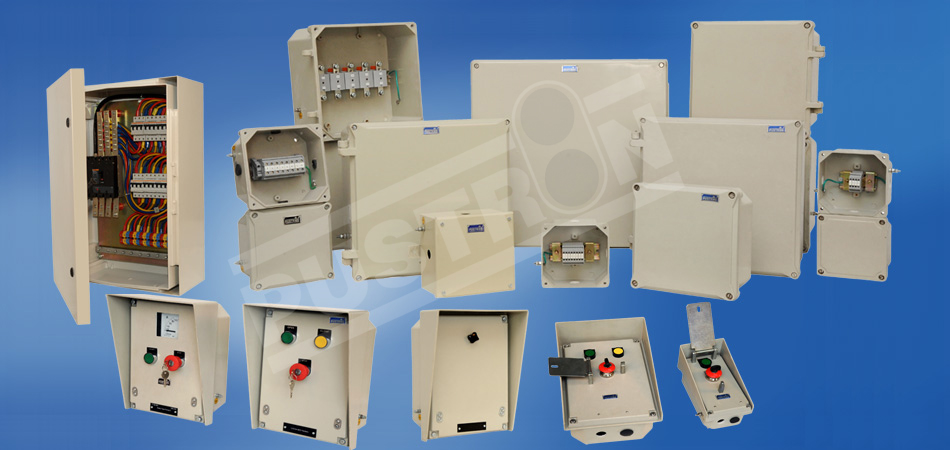
The FRP Advantage
Wood rots. Steel rusts. Aluminum dents. Fiberglass reinforced plastic lasts.
Traditional building materials have their place. But for harsh, corrosive environments, fiberglass reinforced polymer (FRP) is a smart choice.
Structural has the strength of steel at a fraction of the weight those other materials needs to be replaced, it will still have plenty of life.
In short, fiberglass pultrusions give you a different way to solve your design challenges - one that can reduce costs and improve performance in the long run. To maximize these benefits, however, it's best to design with the properties of FRP in mind from the start. Our engineers and fabricators can help, so contact us with your questions.
What is FRP ?
Fiberglass-reinforced plastic is one of the strongest and most durable materials in the world.
FRP also known as "composites" are a combination of :
Resin, such as polyester or vinylester
Reinforcements, such as fiberglass roving and mat
Additives, such as pigments, UV inhibitors, fire retardant, etc.
Surface veil, which enhances corrosion resistance, UV protection and appearance
These materials work in concert to provide a specific set of strength and performance properties, including :
- Light weight with high strength
- Corrosion free and impact resistant
- Dimensional stability
- Electrically non-conductive
- Non-magnetic and non-sparking
- Low thermal conductivity
- Rapid installation with standard tools
- RF transparency
FRP v/s Traditional Materials
Traditional building materials have their place. But for harsh, corrosive environments, FRP is a smart choice. Here's how FRP compares to several traditional options.
|
FRP Composites Pultruded GFRP |
Steel A 709 Grade 50 |
Aluminum 6061-T651 & 6061-T6 |
|
|---|---|---|---|
| CORROSION, ROT AND INSECT RESISTANCE | Resista and broad range of chemicals and is unaffected by moisture or immersion in water. Resists insect damage. Painting is only suggested when exposed to UV rays/direct sunlight. | Subject to oxidation and corrosion. Requires painting or galvanizing for many applications. | Can cause galvanic corrosion. (Anodizing and other coatings increase corrosion resistance.) |
| STRENGTH | Has greater flexural strength than timber and pound for pound is often stronger than steel and aluminum in the lengthwise direction. Ultimate flexural strength (Fu): LW = 30,000 psi (30 ksi) CW = 10,000 psi (10 ksi) Compression strength : LW = 30,000 psi (30 ksi) CW = 15,000 psi (10 ksi) |
Homogeneous material. Yield strength (Fv) = 36 ksi | Homogeneous material. Flexural strength (Fu) = 35 ksi |
| WEIGHT | Weighs 75% less than steel and 30% less than aluminum. | Could require lifting equipment to move and place. 1/2-in thick plate = 20.4 lbs/sq ft | Lightweight - about a third of the weight of copper or steel. |
| ELECTRICAL CONDUCTIVITY | Nonconductive. High dielectric capability. | Conducts electricity Grounding potential. | Conducts electricity Grounding potential. |
| STIFFNESS | Up to 3.3 times as rigid as timber. Will not permanently deform under working load. Modulus of elasticity : 2.8 x 10ø psi | Modulus of elasticity : 29 x 10ø psi | Modulus of elasticity : 10 x 10ø psi |
| IMPACT RESISTANCE | Will not permanently deform under impact. Glass mat in pultruded parts distributes impact load to prevent surface damage, even in subzero temperatures. | Can permanently deform under impact. | Easily deforms under impact. | ENVIRONMENTAL IMPACT | Not hazardous to the environment. | Not hazardous. | Not hazardous. | COLOR | Color is molded through; no painting required. Variety of colors available. | Must be painted for color, and may require repainting over time. | Colors require prefinishes. anodic coatings and paints. Mechanical, chemical and electroplate finishes can be applied. | COST | Lower installation costs, less maintenance and longer product life allow for a lower lifecycle cost. | Lower initial material cost. | Part price comparable to FRP. | EMI/RFI TRANSPARENCY | Transparent to radio waves and EMI/RFI transmissions. Used for radar and antennae enclosures and supports. | Can interfere with EMI/RFI transmissions. | Highly reflective to EMI/RFI transmissions. | FABRICATION | Can be field-fabricated using simple carpenter's tools with carbon or diamond tip blades no torches or welding required. Light weight allows easier transport and installation. | Often requires welding and cutting torches. Heavier material requires special equipment to erect and install. | Good machinability (welding, brazing, soldering or mechanical joining). |
* 12% moisture content
